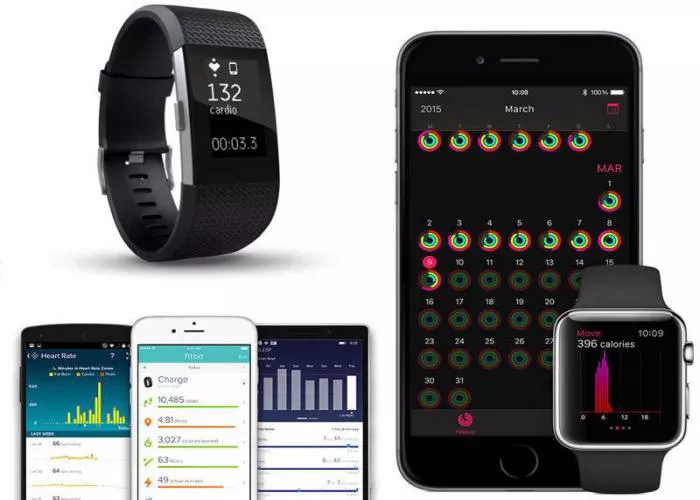Apple and Fitbit dominate the wearables market, but their approaches to fitness tracking, health monitoring, and smart features differ significantly. While Apple leads in smartwatch innovation, Fitbit offers broader compatibility and a more intuitive wellness experience.
Fitbit Wearables: A Closer Look
Smartwatches: Versa 4 and Sense 2
Fitbit’s latest smartwatches, the Versa 4 and Sense 2, were released in 2022. However, Google has confirmed no new models will follow, making these the final Fitbit-branded smartwatches.
The Sense 2 includes advanced health sensors like ECG, skin temperature tracking, and an electrodermal activity (EDA) sensor for stress monitoring. The Versa 4 offers GPS, SpO2, and heart rate tracking at a lower price point. Both devices function more as enhanced fitness trackers rather than full-fledged smartwatches.
Google Pixel Watch: The Evolution of Fitbit
The Google Pixel Watch series, now in its third generation, integrates Fitbit’s tracking technology with Wear OS. The Pixel Watch 3 features an AMOLED display, extensive app support, and all the health sensors of the Sense 2. However, battery life remains a limitation, with the 41mm model lasting just over a day.
Fitness Trackers: Charge, Luxe & Inspire
Fitbit’s classic fitness trackers include:
Inspire 3: An entry-level tracker with heart rate, SpO2, and temperature sensors.
Charge 6: The flagship tracker, packing ECG, GPS, and Google services.
Luxe: A slim, fashion-focused tracker with a color touchscreen.
Apple Watch Models: What’s Available?
Apple Watch Series 10
The latest mid-tier model features a 42mm or 46mm case, ECG, gesture control, and advanced women’s health tracking. Battery life ranges from one to two days.
Apple Watch SE
A budget-friendly option with basic features like GPS and Apple Pay but lacks ECG and an always-on display.
Apple Watch Ultra 2
Designed for extreme sports, the Ultra 2 boasts a 49mm titanium case, 100m water resistance, and up to three days of battery life.
Key Comparisons
Google Pixel Watch 3 vs. Apple Watch Series 10
Both offer AMOLED displays, ECG, blood oxygen monitoring, and LTE options. The Apple Watch excels in iPhone integration, while the Pixel Watch 3 leverages Fitbit’s tracking and Android compatibility.
Apple Watch SE vs. Fitbit Versa 4
The SE provides a richer smartwatch experience with LTE and app support, whereas the Versa 4 lasts longer (up to a week) but lacks advanced smart features.
Health and Fitness Tracking
Heart Rate Monitoring
Fitbit devices continuously scan for irregularities, while Apple’s ECG and sleep-based AFib detection offer medical-grade insights.
Sleep Tracking
Fitbit provides detailed sleep stage breakdowns and Sleep Scores (with Premium). Apple focuses on bedtime consistency and integrates sleep tracking with iPhone settings.
Stress Management
Fitbit leads with Relax mode, Stress Management scores, and EDA sensors. Apple’s Mindfulness app offers simpler, mood-based tracking.
Women’s Health
Both brands support menstrual cycle tracking, with temperature sensors improving accuracy.
Sports Tracking
GPS Performance
Apple’s Ultra 2 features dual-frequency GNSS for superior accuracy. Fitbit’s GPS is reliable but not as precise.
Swimming
Apple Watches track pool and open-water swims, while Fitbit’s Versa 4 and Charge 6 are limited to pool tracking.
Heart Rate During Workouts
Apple’s sensors outperform Fitbit in high-intensity workouts, with support for external Bluetooth heart rate monitors.
Software Experience
Fitbit App
User-friendly with rich data visualization, social challenges, and third-party app integration. Some features require a Premium subscription.
Apple Ecosystem
Health, Fitness, and Watch apps provide comprehensive tracking but can be less intuitive. The App Store offers extensive third-party app support.


